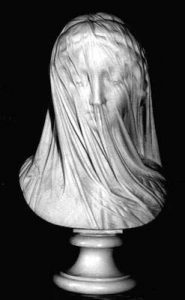Archival Moment
July 4, 1848
It was on July 4, 1848 that many of the citizens of the town of St. John’s were walking to the “outskirts of the town” to witness the blessing of new cemetery for the Roman Catholics. Many attending the service were unhappy that their loved one’s would be interred so far out in the country.
Bishop John Thomas Mullock, the Catholic Bishop of Newfoundland wrote in his diary on July 4, 1848:
“Consecrated the cemetery at Belvedere … multitude present. High Mass afterwards in the Mortuary Chapel of All Saints.”
The leaders of all the churches in St. John’s had been given notice that the local government was not happy with internments in the town of St. John’s and that they would have to seek burial ground further away from the livyers.
Up until 1849 all burials for all denominations were made in the town’s cemeteries. The Roman Catholic’s buried their dead in the Long’s Hill Cemetery located near what is now the site of the parking lot of St. Andrew’s Presbyterian Church (The Kirk). The Church of England Cemetery was in the church yard of the Anglican Cathedral of St. John the Baptist which borders on Duckworth Street, Church Hill, Cathedral Street and Gower Street. The Wesleyan Cemetery was on the corner of Gower Street and Queen’s Road.
Discontent about the state of cemeteries within the boundary of the town of St. John’s began to surface shortly after the great fire of June 1846.
One of the effects of the Great Fire was reported in the Journal of the House of Assembly on July 14, 1846. The report stated:
“Troops of starving dogs, infesting the town have become dangerous as well as to the living as to the dead; they have commenced desecrating the tombs of the cemetery …. And may be seen gnawing the bones of those who have been buried …. Pigs and goats infest in great numbers …. And the gravestones and monuments of the deceased are daily violated.”
One of the results of the Great Fire of 1846 was that all fencing and enclosures for farm animals had been destroyed by the fire allowing the farm animals including the goats and pigs to wonder about the town. Their favorite place to feed and graze was in the ‘downtown’ cemeteries.
On July 15, 1849 a Proclamation was issued by Governor, Sir J. Gaspard LeMarchant “forbidding any more burials within the city limits.” The Governor was responding to the fears of town residents that epidemics such as cholera and typhus were resulting from the internment of the dead in the town. The argument was that as bodies of the newly interred decomposed in the town cemeteries, their diseases were seeping into the wells that were the source of the water supply for town.
Governor, Sir J, Gaspard LeMarchant argued:
“as a very obvious method of improving the sanitary conditions of this town, I recommend having an act passed prohibiting any internments in the limits of this town…. “
To get some indication as to how St. John’s has grown one only has to consider that the Belvedere property that our ancestors were walking to for the blessing of the cemetery in 1849 is now known as Belvedere Cemetery and is located between Bonaventure Avenue and Newtown Road.
It is no longer on the “outskirts of the town” no longer “in the country”.
There has been a long established tradition in Newfoundland and Labrador whereby families continue to attend to the cemetery plots of their loved one’s. Typically a few days before the annual flower or liturgical service families would gather to clean the family plot.
2019 St. John’s and Area Cemetery Schedule
For flower services and or Liturgical Services.
Mount Pleasant Cemetery Monday July 8th 7:00pm
Mount Carmel Cemetery Tuesday July 9th 7:00pm
Kenmount Road Cemetery Wednesday July 10th 7:00pm
Belvedere Cemetery Tuesday July 16 th 7:00pm
Forest Road Cemetery Wednesday July 17th 7:30pm
St. Joseph’s Cemetery Thursday July 18th 7:00pm
Petty Harbour
General Protestant Cemetery Monday July 22 7:00pm
Holy Sepulcher Cemetery Tuesday July 23 7:00pm
St. Kevin’s Cemetery Thursday July 25th 7:00pm
The Goulds
Recommended Archival Collection: All of the churches have established archives that hold detailed records that will help you locate the grave site of a loved one buried in the cemeteries in this province





